You are here
Аksu-Zhabagly reserve.
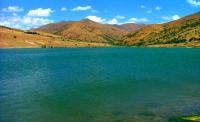
Tours over reserves of Southern Kazakhstan.
“When Nature has work to be done, she creates a genius to do it”
Ralph Waldo Emerson.
Tours & holidays in Kazakhstan.
Aksu-Zhabagly preserve is only preserve in Kazakhstan or Central Asia to receive the status of a UNESCO biosphere preserve. For more than 70 years the mountain woods here are safe from an ax, grass from scythe and rivers from industrial pollution.
Fresh greenery is all around. The Graig’s Tulip is selected as symbol of the preserve. Unique creation of nature is Aksu Canyon. This giant canyon is 15 km long and 500 m deep. Nature is rich and various and the reserve includes about 1,200 species of plants, 42 kinds of animals, 238 kinds of birds.
Occupying considerable аrеа (over 128 thousand hectares) within altitudes of 1100 – 4100 meters above sea level, this reservation plays аn important role in preservation biological variety of the West Tien-Shan.
Due to the last data, the number of preserved types represented bу the lollowing way: highest plants - over 1300; mushrooms- about 250; mosses, lichens, algae - bу 60 - 70; birds - 238 (including 150 - nesting); mammals - about 50; amphibia and creepers - 12; lishes - 2; invertebrates - over 2 thousand.
Results of environmental and scientilic activity of the reserve аrе widely known in Kazakhstan and abroad. About thousand scientilic and popular scientilic publications were sold out all over the world.
Last years Aksu-Dzhabagly is popular among scientists and ecological tourists from England, Germany, USA, Japan and other loreign countries. Dzhabagly River goes out to the plain in live kilometers from the village.
Неrе the reserve boundary runs, which was named bу names of main rivers originating in this territory. The narrow lath of shady green of willows and birches along bluish swirling river goes away to the east, dodging bу а shallow ravine.
Its south slope is steep, rocky and waterless, gentle terrace gashed bу numerous side tributaries in the middle part of the north for а good two dozens of kilometeгs to the tops stretches. Little bу little climb the mountain, the path of our lirst route passes.
Unique nature of mountain ecosystem is fragile and vulnerable. Since long ago the traditions of the people of our region were bases on careful regard and reasonable use of soil, water and every living thing in the mountains.
However, last century many customs and traditions have been forgotten or lost, and technogenic civilization, strengthening anthropogenic stress and global climate fluctuation have strong and, unfortunately, rather often negative influence on mountain nature.
In this situation great attention is paid to especially protected natural territories, which development and improvement was taken place during the last 50 - 80th. Especially active measures in this direction are undertaken in the largest country of the region – in Kazakhstan.
Here special governmental programs and joint international projects are developed and operate, parliament hearings about condition and development of especially protected natural territories (EPNT) are held.
Today there are 115 EPNTs in Kazakhstan of 11 different categories: 10 nature reserves and national parks, more than 80 wildlife preserves and nature sanctuaries, 5 conservation areas, 2 closed woods, 3 zoos, 5 botanical gardens etc.
Total area is 21,4 million hectares, it is about 8 % of all territory of the republic. In Kazakhstan, Aksu-Zhabagly the first nature reserve in Central Asia was founded in 1926. Occupying the big area (132 thousand hectares) in the range of heights from 1100 to 4100 meters, this nature reserve plays leading role in preservation of biological variety of Western Tien-Shan.
Aksu-Zhabagly is well l-known not only for unique juniper woods, including juniper seravschanica which is entered the Red Book of Kazakhstan, beautiful beds of Tulipa greigii and Tulipa kaufmanniana which are the ancestors of hundred cultural variety, but also for colourful glade of subalpine meadows and Alpine lawns.
There are many picturesque natural formations and landscapes in the reserve, such as grandiose canyon of the Aksu River with depth of 500 m and length of 30 kilometers, sparkling glaciers in Kishi-Aksu and Bugulytora valleys.
In high-altitude Kaskabulak ditch there is a unique gallery of rock paintings. The richest in the world remains of flora and fauna of Jurassic period were found in Aulie and Kabastau paleontological sites.
Last decade new protected territories are formed in this region. Sairam – Ugamsky national park with total area 140 thousand hectares adjoining to nature reserve, providers protection of valuable treelike juniper woods of Sairamsu and Kaskasu, unique in Kazakhstan population of Marmota menzbieri, as well as groves of pistachio, Celtis caucasica and hawthorn in valleys of Daubaba, Mashat and Kokbulak rivers.
Berikkara wildlife preserve comes under the powers of Aksu-Zhabagly in Small Karatau mountains with unique relic groves of Fraxinus sogdiana and Populus berkarcnsis, where the most dense population of nesting Terpsiphone paradisu is reported.
Climate Aksu-Zhabagly reserve. Very continental, average temperature of coldest month is 4,9 Celsius grade, warmest month + 21,6 Celsius grade; average annual rainfalls 400-700 mm (up to 850- 900 mm in high altitude), mainly in spring season.
Zones. Dry semi desert and steppe mountain foothills, forests of treelike junipers, brush woods of creeping junipers, alpine meadows, snow and glaciers.
Sites for watching Aksu-Zhabagly reserve. There is a good choice of interesting and original natural places to see, however, for the initial stage of our program development we propose you four the most famous sites. Traveling along the Aksu Canyon, Kshi-Kaindy and Ulken Kaindy Gorges, and visiting Kaskabulak Depression in high mountains you will find most of typical wildlife inhabitants of the Reserve, acquaint with rare, endemic and relict plants and animals and enjoy the variable landscapes. If you will visit the Reserve in May you will wonder by huge area of wild blooming tulips. Among other species there is a famous Tulipa greigii named for its beauty and size “The King of the Tulips”. The density of Tulipa greigii in the Reserve is incredibly high and reach 20 specimens per 1 sq.m.
Wildlife Aksu-Zhabagly reserve. A typical pattern of south mountains of Middle Asia with a prevalence of Mediterranean elements. Close resemblance to flora and fauna of Pamiro-Alai Mountain System. Flora: more 1400 species, about 300 species are rare, endemic, relict or endangerous; 200 species of medical herbs.
Fauna: about 300 species of vertebrates, including 239 bird species that is near half of total species diversity of Kazakhstan; about 700 species of beetles, more that 300 species of butterfly and 100 species of bugs.
There is a good choice of interesting and original natural places to see, however, for the initial stage of our program development we propose you four the most famous sites. Traveling along the Aksu Canyon, Kshi-Kaindy and Ulken Kaindy Gorges, and visiting Kaskabulak Depression in high mountains you will find most of typical wildlife inhabitants of the Reserve, acquaint with rare, endemic and relict plants and animals and enjoy the variable landscapes.
If you will visit the Reserve in May you will wonder by huge area of wild blooming tulips. Among other species there is a famous Tulipa greigii named for its beauty and size “The King of the Tulips”.
The density of Tulipa greigii in the Reserve is incredibly high and reach 20 specimens per 1 sq.m. Famous site of the area is Aksu-Zhabagly Reserve located in the ridges of Western Tien-Shan. Total area of the reserve is 74.4 thousand ha. Founded in 1926 it became the first reserve created in Kazakhstan and Central Asia.
You will be amazed with magnificent mountain ridges, mountainous rivers and wild nature! The reserve received its name because of two rivers Aksu and Zhabagly, which belong to the Basin of Arys River (tributary of Syrdariya). These mountainous rivers flow in deep picturesque ravines.
The reserve has basic plantation belts from semi-deserts to mountainous tundra and snow-ice belt, at th e elevations from 1000 to 4280m above sea level. Here are several dozens of species of endemic plants. In spring the alpine meadows flower with the amazing beauty.
Thus in Aksu Zhabagly you can see the blossom of such a rare species of flowers as gigantic Greig’s tulips. Travellers will be amazed with the great diversity of flowering tulips on the background of emerald grass. By the way, Dutch tulips come from Aksu Zhabagly Reserve!
The canyon of Aksu River with steep banks, sometimes completely impassable, is of great interest. Mountainous tops (height reaches 4000 m) have eternal snows, steep slopes with the rocks. In the middle level there are sub-alpine and alpine meadows and open woodlands.
The lower part of the mountain slopes (1200 - 2000 m high) is covered with scarce forest and has the diverse meadow plantation and rich fauna. Aksu-Zhabagly is the richest treasury of rare, disappearing and endemic species of animals and plants.
Here are gigantic Greig’s and Kaufman’s tulips. In the mountains you can see bear, golden eagle, ibex, snow leopard, mocassin, goatsucker, black vulture and many other animals and insects. Sometimes bears dare to come to the settlements so close that you can them even without binoculars. Usually they do not make harm to people.
Biological diversity of the reserve Aksu-Zhabagly reserve.
The fauna of the reserve is rich and diverse. In Aksu-Zhabagly there are such rare animals as snow leopard, Tien-Shan brown bear, ounce, lynx, argali and golden eagles, the wing spread of which can reach 3 meters! The reserve has two paleonthological sections – Karabastau and Aulke where there are prints of the organisms, the age of which is from 60 to 200 million years.
Tulips in Aksu-Zhabagly.
Aksu-Zhabagly can be called the kingdom of tulips. From six species of tulips on the territory of the reserve, four species are the forefathers of many cultural varieties. These species are in the Red Books of Kazakhstan, Russia and Uzbekistan.
Tulips are widely spread in the reserve; they usually flower from April to August making the mountainous landscapes very beautiful.


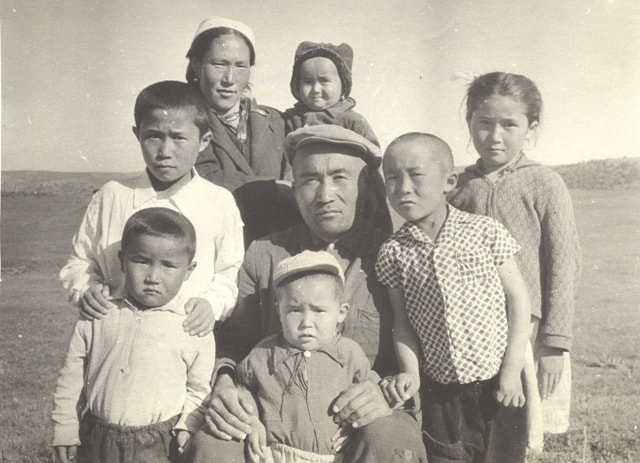
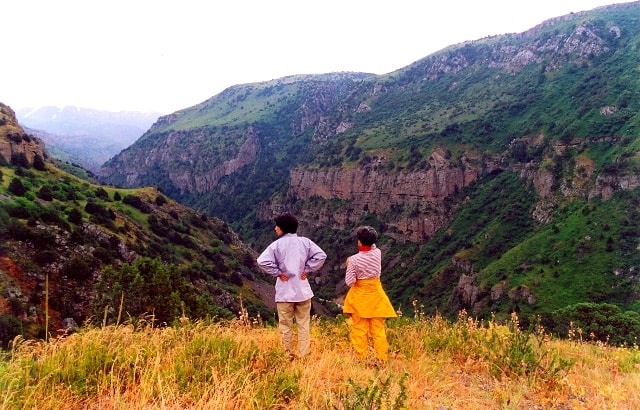
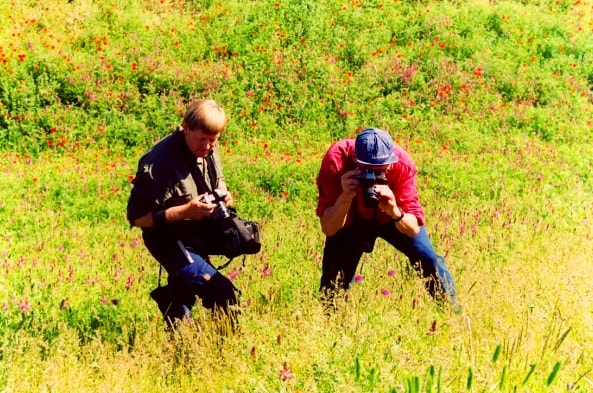

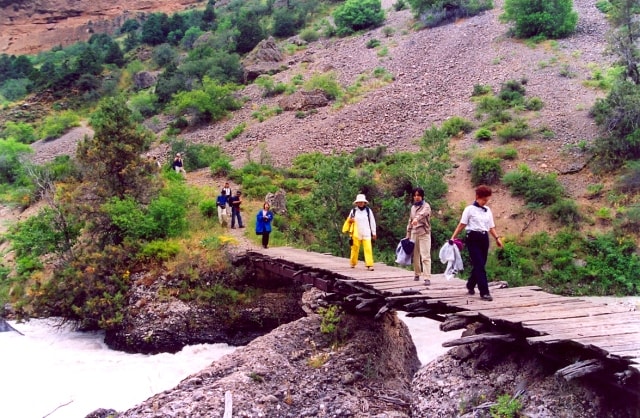
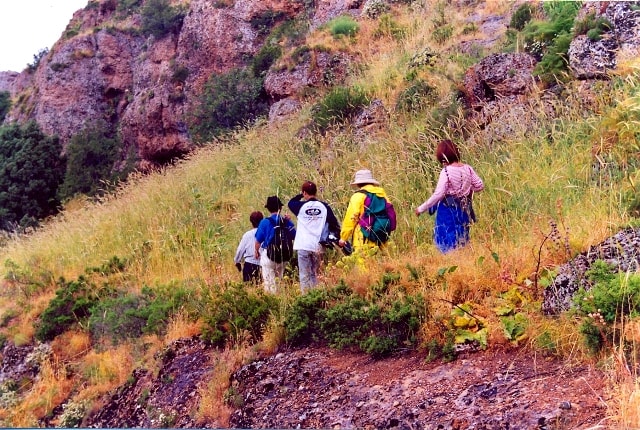
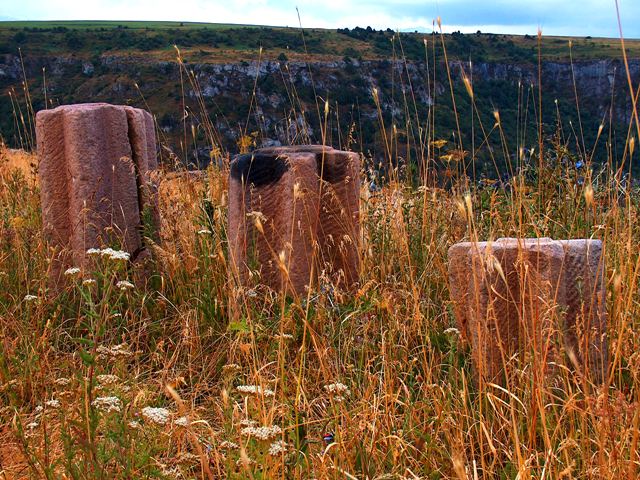
Authority:
Reserves of Central Asia and Kazakhstan. Almaty, Kazakhstan, 2006. Under the general edition of R. Yachenko. The international union of wildlife management IUCN - The World Conservation Union. Geographical features (on Kerteshev, Vagapov 2001). Reserves USSR. Reserves of Central Asia and Kazakhstan. Moscow "Idea", 1990.
Photos
Alexander Petrov.






